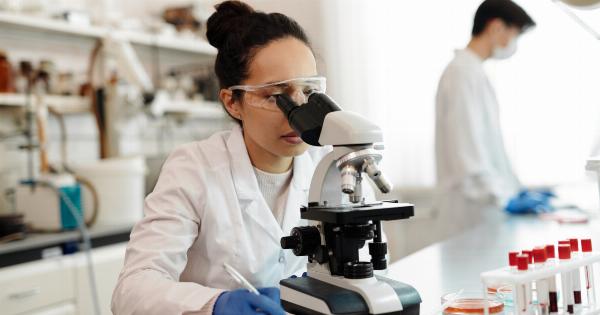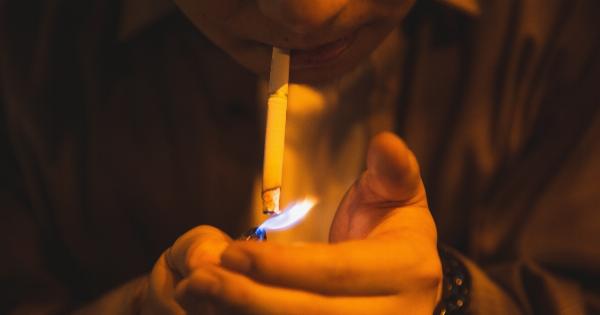Infidelity in relationships has been a longstanding concern for individuals and couples.
While suspicions of cheating may arise due to various reasons, such as changes in behavior or sudden distance, one unexpected clue to detect infidelity lies within men’s sperm. Recent scientific studies have revealed fascinating insights into how examining men’s sperm can potentially shine a light on their partner’s infidelity.
In this article, we will explore the science behind this phenomenon and the implications it carries for relationships.
The link between sperm competition and infidelity
Sperm competition refers to the phenomenon where the sperm of multiple males compete for fertilization of a female’s egg. Evolutionarily, this competition can be traced back to our ancestors, where multiple partners were prevalent.
In such scenarios, the male reproductive system developed strategies to increase the likelihood of their sperm successfully fertilizing an egg.
Research has shown that when an individual suspects their partner of infidelity, the male body starts producing a higher quantity of sperm.
This increase in sperm production is believed to be a biological response to compete against potential rival sperm within the female reproductive system. The idea behind this response is to maximize the chances of the man’s sperm outracing and outcompeting any other sperm present.
Sperm morphology and cheating
Aside from quantity, another aspect that reveals potential infidelity lies in the sperm’s morphology. The shape and appearance of sperm can vary significantly between individuals.
Suspicion of infidelity may arise if a man’s sperm morphology drastically differs from that of their partner’s previous sexual partners. This discrepancy can suggest the presence of another individual’s sperm within the reproductive system.
Scientific studies have found that men who suspect their partner’s infidelity tend to have sperm with a higher percentage of abnormalities or defects.
These abnormalities can include bent tails, misshapen heads, or any irregularities that hinder the sperm’s overall motility and function. In contrast, men who are confident of their partner’s loyalty typically exhibit a healthier and more normal sperm morphology.
DNA testing and the identification of foreign sperm
DNA testing has revolutionized various fields, including forensics and paternity testing. Similarly, it can also be utilized to detect infidelity within a relationship.
DNA analysis allows for the identification of foreign genetic material present within a man’s sperm. Should foreign DNA be discovered, it signifies the presence of another individual’s sperm, confirming the suspicion of infidelity.
However, it is essential to note that DNA testing for infidelity is a sensitive matter and should be approached with caution.
Open communication between partners is crucial before resorting to such measures, as it can significantly impact the dynamics of the relationship.
Other factors affecting sperm and potential misconceptions
While the link between men’s sperm and infidelity is intriguing, it is important to consider other factors that can influence sperm quality and morphology.
Various lifestyle choices such as diet, exercise, smoking, and exposure to environmental toxins can impact the overall health and appearance of sperm.
Additionally, fertility issues, genetic abnormalities, and underlying medical conditions can also contribute to differences in sperm morphology.
Therefore, it is crucial to approach any suspicion of infidelity with empathy and open communication, rather than solely relying on sperm characteristics for conclusions.
Implications for relationships and communication
The discovery that men’s sperm can potentially reveal their partner’s infidelity raises several important implications for relationships. While it may provide a clue to suspicions, it is crucial to approach such revelations with care.
Open and honest communication between partners is vital. A mature conversation about doubts or concerns can help alleviate fears or identify potential relationship issues.
Seeking professional guidance from relationship counselors or therapists can also provide a safe space to navigate through trust issues and strengthen the bond between partners.
It is important to recognize that biology and evolution are not the only factors at play in relationships. Trust, emotional connection, and mutual respect form the foundation of a healthy and thriving partnership.
Relying solely on sperm characteristics to determine infidelity can neglect the complexity of human relationships.
Conclusion
Examining men’s sperm to potentially reveal their partner’s infidelity is a fascinating area of scientific research.
The link between sperm competition, abnormal sperm morphology, and DNA testing offers insights into the possible detection of infidelity. However, it is essential to approach such revelations with caution and recognize the multitude of factors that can impact sperm characteristics.
In the realm of relationships, open communication and trust-building should take precedence over solely relying on biological indicators.
Seeking professional guidance and creating a safe space for discussing doubts and concerns can help couples navigate through challenging situations and emerge stronger.






























